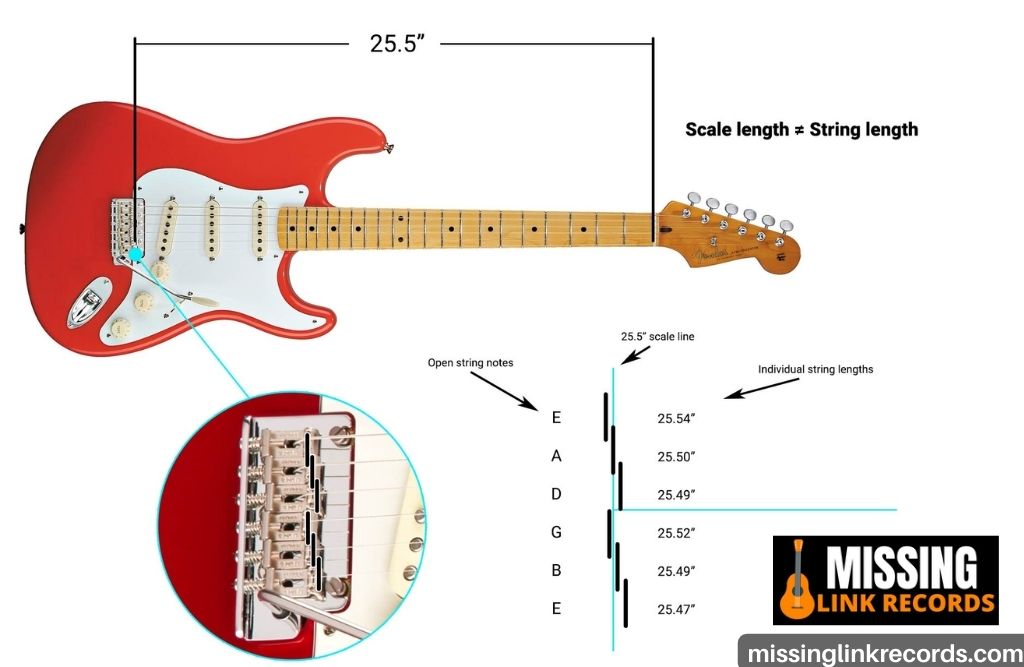Guitar Intonation: What Is Guitar Intonation?

What Is Guitar Intonation? Intonation is the process of adjusting the pitch of a string of notes played on a guitar to make it sound more pleasing to the ear. The strings on a guitar are not perfectly tuned, so when you play chords and open-position notes, they may sound out of tune with each other.
You can adjust the intonation on your guitar by tuning the strings slightly sharp or flat. It will help you achieve more accurate tuning across all six strings and make them sound better together. Keep reading more if you want to learn how to do it and its importance.
How To Intonate A guitar?
Some guitars are designed with adjustable saddles that make it easy to adjust intonation at home. These guitars typically have six individual saddle screws and a screwdriver slot for each saddle. If your guitar has this type of bridge, you will be able to adjust the intonation by following these steps easily:
Play a note on the 12th fret (or any other fret) and then play that same note at the 7th fret (an octave higher). If this note sounds the same as it did at the 12th fret, then your intonation is fine. If not, then read on.
Adjust each saddle screw until both notes match perfectly on the pitch (you can use a tuner if you like). If you are unsure how far to turn each screw, start by turning them all equally until they are close, and then fine-tune them using trial and error until they match perfectly in pitch and sound the same.
Make sure all notes are still in tune when playing up and down the neck. Play an open string and then slowly move up (or down) to another open string while listening for any changes in pitch or tone quality.
Read: What Are Power Chords On Guitar or What Are Modes In Guitar
Frequently Asked Questions (FAQs)
How do I know if my guitar needs intonation?
Most guitars need intonation adjustment at some point. The easiest way to check if your guitar needs intonation is to play an open string and fret the note on the 12th fret, then compare the pitch of both notes. If they do not match up, then your guitar needs some adjusting.
What is the proper way to intonate a guitar?
The purpose of intonation is to make sure all the notes are in tune across the entire fretboard. When a string is fretted at any given fret, it should produce a pitch in tune with the open string (or another fretted string). If it does not, you need to adjust your intonation so that it does. The two most common ways to adjust intonation are:
- Fretting the string at a different place on the neck (e.g., fret #4 vs. fret #9)
- Changing the bridge saddle height
How often does a guitar need to be intonated?
Intonation is the relative tuning of the individual notes in a scale to each other. It is imperative on stringed instruments since if the instrument is out of tune, it can be challenging to play. Most guitars need some amount of intonation adjustment from time to time. The amount varies from instrument to instrument and from player to player, but as a general rule, it is a good idea to have your guitar intonated every couple of years or so.

Final Words
Guitar intonation is essential because it makes your guitar sound better and more in tune with itself. The more in tune a string is, the closer it is to harmonize with its neighboring strings. Not only that, but the intonation process can help you avoid some problems or let you know when a problem exists so you can get it fixed.
Also Visit: What Are Scales In Guitar


